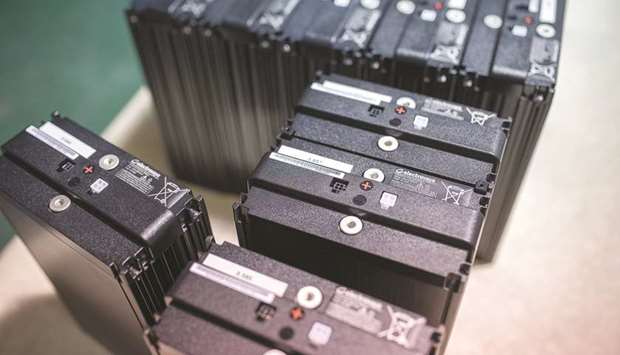In 2011, there was a crash of a South Korean airline Asiana B747F following a fire in the cargo compartment. The aircraft was carrying a large automotive lithium ion battery, loaded next to a large quantity of flammable liquid.
The scheduled cargo flight from Incheon International Airport, Incheon, South Korea, to Shanghai Pudong International Airport in China, crashed into the international waters about 130km west of Jeju International Airport after the flight crew reported a cargo fire and attempted to divert to Jeju International Airport.
Aboard the aircraft were two pilots, both fatally injured, and the aircraft was destroyed.
Immediately after the accident, search and rescue operations have been initiated, and about two hours after the accident, the South Korean Coast Guard recovered some floating debris and wreckage at the accident site.
The Aviation and Railway Accident Investigation Board (ARAIB) determined the probable cause of this accident as follows: a fire developed on or near the pallets containing dangerous goods but no physical evidence of the cause of the fire was found.
The fire rapidly escalated into a large uncontained fire, and this caused some portions of the fuselage to separate from the aircraft in midair, thereby resulting in the crash.
Preliminary findings by South Korea’s Aircraft and Railway Accident Investigation Board showed the aircraft was 50 minutes into its flight and had just been transferred to Shanghai area control centre when it made the emergency call.
A year earlier than this incident – in September 2010, the crew of a cargo plane reported radio problems and smoke in the cockpit of the B747-400 freighter shortly before the crash in an unpopulated area near Dubai.
The cause was not known at the time, but is now known to have been due to a fire caused by lithium batteries.
Investigators say the crash highlights the risks posed by lithium batteries, which are prone to overheating leading to intense fires.
A 2013 blaze on a parked Boeing 787 Dreamliner owned by Ethiopian at London’s Heathrow prompted investigators to call for a safety review of all lithium battery-powered equipment on planes.
The blaze burned through the fuselage and filled the cabin Ethiopian Airlines jet with acrid smoke while the plane was parked at a remote stand on the runway.
Since the Heathrow incident, Boeing has added a specific section on fighting lithium battery fires to its flight attendant manual.
According to the United States Federal Aviation Administration (FAA) (as of January 24, 2018) there were as many as 191 air/airport incidents involving lithium batteries carried as cargo or baggage that have been recorded since March 20, 1991.
Most of these incidents included smoke, fire, extreme heat or explosion involving lithium batteries or unknown battery types. Incidents have included devices such as E-cigarettes, laptops, cell phones, and tablets. The severity of these incidents ranged from minor injuries to emergency landings.
The accident investigation report in the Asiana airline crash recommended that airlines not load flammable liquids in close proximity to lithium batteries.
The IATA Dangerous Goods Board believes this “should be expanded to include all flammable dangerous goods and to explosives.” This was proposed to the Dangerous Goods Panel, which adopted requirements for packages and overpacks containing lithium batteries to be segregated from packages and overpacks containing explosives, flammable gases, flammable liquids and flammable solids when loaded into an aircraft unit load device and when loaded into the aircraft cargo compartment.
This was adopted to reduce the risk should there be a fire in the cargo compartment so that the flammable dangerous goods don’t contribute to intensity of any fire that may engulf the lithium batteries.
Shippers of lithium cells, batteries and equipment containing lithium cells and batteries when they offer these for transport must sign the completed Shipper’s Declaration, said Dave Brennan, IATA assistant director (Cargo Safety Standards).
“In signing the ‘Shipper’s Declaration’, the shipper is declaring that what they are offering complies with all relevant parts of the regulations,” Brennan points out.
Even as regulators and safety experts are working on tackling the issue, a few precautions can help prevent such incidents. While lithium batteries are becoming more and more prevalent in our society, so are the risks involved. The above mishaps highlight dangers posed by lithium batteries on flights.
Safety experts therefore urge passengers not to travel with a device with a damaged or defective battery.
They must make sure battery is properly installed in their devices.
Batteries properly installed in devices pose less of a fire risk as long as they are recharged properly.
If a passenger is travelling with a spare battery, he must take care to protect them from damage and short circuiting. This can be accomplished by placing the spare batteries in their original retail packaging; placing tape over the terminals of the battery to insulate them or place each battery in a separate plastic or protective pouch.
Unless something is done to prevent similar disasters due to fire in cargo hold caused by lithium batteries, the FAA says such crashes are all but inevitable in future!
Pratap John is Business Editor and Chief Business Reporter at Gulf Times

Lithium ion batteries are seen at the Electrovaya headquarters in Canada. While lithium batteries are becoming more and more prevalent in our society, so are the risks involved.

